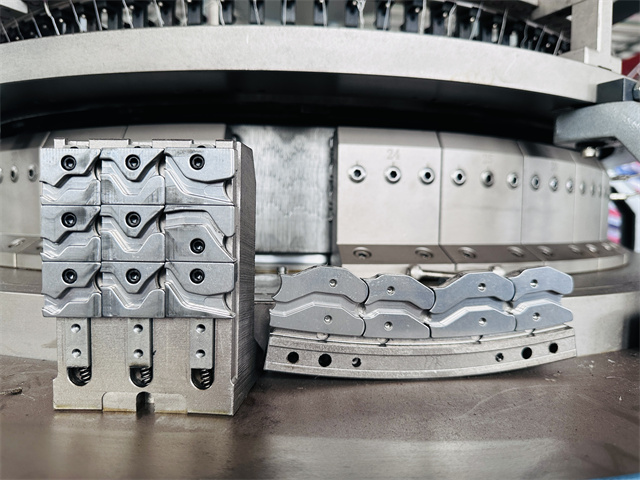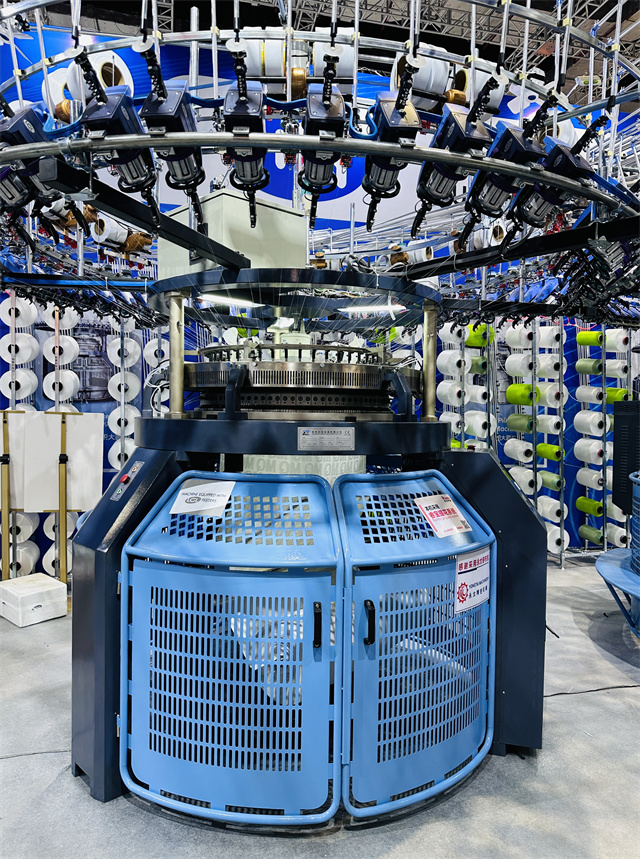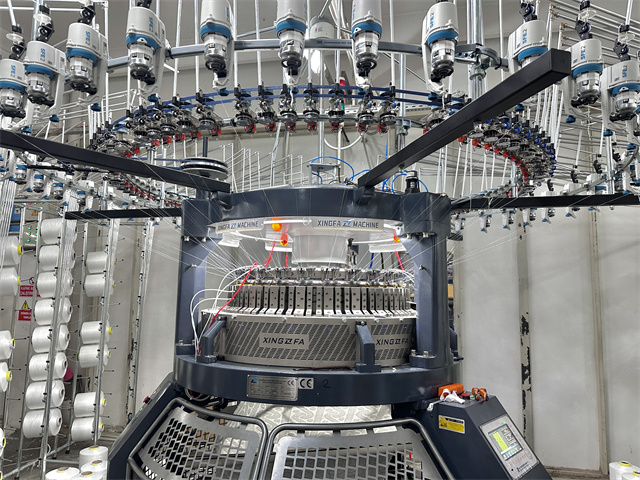Author:Xingfa Knitting MachineFROM:Circular Knitting Machine Manufacturer TIME:2024-03-11
The Evolution of High-Speed Circular Knitting Machine

Circular knitting machines have a long and storied history dating back to the 19th century. The earliest machines were manual and operated at relatively low speeds, limiting their efficiency. However, these early machines laid the groundwork for the development of high-speed circular knitting machines by proving the concept of creating knitted fabric in a continuous tube.
One of the significant milestones in the evolution of high-speed circular knitting machines was the shift from cast-iron construction to high-strength alloys. This transition allowed for the development of lighter yet more robust machine frames, resulting in increased machine speeds and overall efficiency. The incorporation of advanced materials revolutionized the industry, setting the stage for further technological advancements.
Traditionally, circular knitting machines were limited in their ability to change patterns without significant downtime. However, with the evolution of high-speed circular knitting machines, on-the-fly pattern changes became a reality. Innovations in needle selection mechanisms, yarn feeding systems, and machine control technology enabled seamless pattern changes, enhancing productivity and expanding design possibilities.
The integration of automation and digitization has been a game-changer in the evolution of high-speed circular knitting machines. Modern machines feature advanced control systems, automated yarn tensioning, and digital pattern inputs, reducing human intervention and increasing precision. This shift towards automation has not only improved production efficiency but also facilitated the realization of intricate and complex fabric designs.

High-speed circular knitting machines have evolved to accommodate a wide range of applications, transcending traditional garment production. Today, these machines are capable of producing technical textiles, sportswear, seamless garments, and even medical textiles. The versatility of these machines has opened doors to new markets and sparked innovation in fabric development and utilization.
In response to growing environmental concerns, the evolution of high-speed circular knitting machines has placed a strong emphasis on energy efficiency and sustainability. Through advancements in motor technology, improved lubrication systems, and intelligent power management, modern machines have significantly reduced energy consumption while maintaining high operational speeds. Additionally, the adoption of eco-friendly materials and practices has further contributed to the sustainability of the knitting industry.
The ongoing evolution of high-speed circular knitting machines is closely linked to the integration of Industry 4.0 technologies. Smart sensors, real-time data analytics, and connectivity solutions have transformed these machines into interconnected, intelligent production systems. This integration has led to predictive maintenance capabilities, optimized production planning, and enhanced quality control, propelling the knitting industry into the era of smart manufacturing.

Looking ahead, the evolution of high-speed circular knitting machines shows no signs of slowing down. Innovations such as 3D knitting, additive manufacturing integration, and advanced material handling techniques are poised to reshape the capabilities of these machines further. Additionally, the continued pursuit of sustainability, coupled with the exploration of novel fiber types, holds promise for the future of circular knitting technology.
In conclusion, the evolution of high-speed circular knitting machines has been marked by continual innovation and adaptation to meet the demands of a dynamic industry. From their humble beginnings to their current state, these machines have undergone remarkable transformations, shaping the landscape of textile manufacturing. As technology continues to advance, the potential for further breakthroughs in circular knitting machinery remains high, driving the industry forward into new frontiers of production and design.
```

 Tel: +86-13533991359
Tel: +86-13533991359
 Email: info@xingfamachine.com
Email: info@xingfamachine.com
 MP/WhatsApp: +86-13533991359
MP/WhatsApp: +86-13533991359
 Manufacturer Address:B26-1 Taiwanese high-tech industrial base, Luoyang town , Quanzhou city, Fujian PRO. China.
Manufacturer Address:B26-1 Taiwanese high-tech industrial base, Luoyang town , Quanzhou city, Fujian PRO. China.